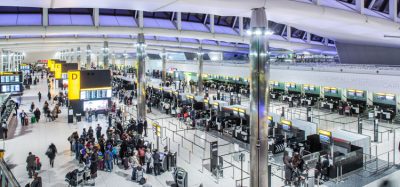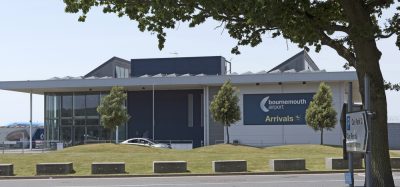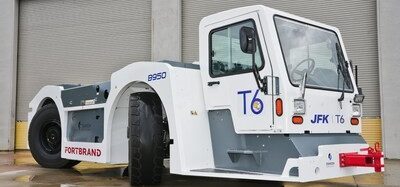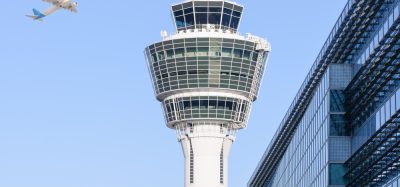Keeping runways safe
Posted: 11 June 2016 | Joseph K W Cheong (ICAO) | No comments yet
Joseph K W Cheong, Technical Officer in the Airport Operations and Interoperability Section at ICAO, reveals how the new global reporting format promises to reduce runway excursions.
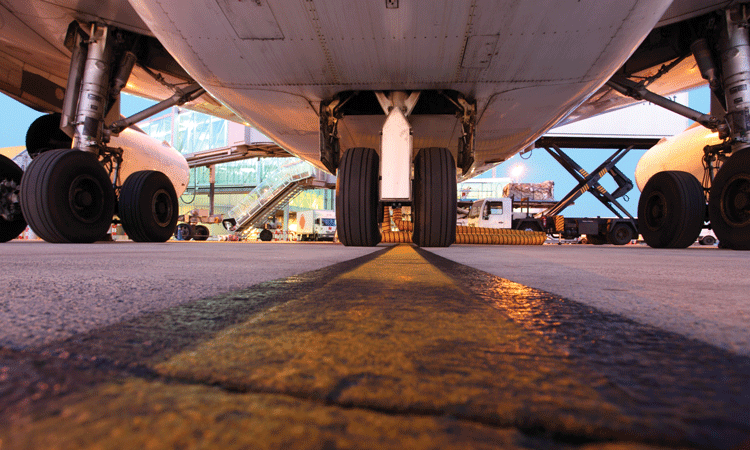

Runway safety is identified as the priority air navigation safety issue in the ICAO Safety Report 2015 with runway excursions remaining one of the top concerns. The Flight Safety Foundation, in an article entitled Report of the Runway Safety Initiative, cites ineffective braking due to runway contamination as the third most common landing excursion risk factor. Runway surface conditions have contributed to many safety events and investigations have revealed shortfalls in the accuracy and timeliness of current assessment and reporting methods.
States, through numerous projects carried out over several decades, have sought to resolve a longstanding problem of harmonising the various friction measuring devices and to link them to aircraft performance. ICAO’s new and harmonised global reporting format is designed to report runway surface conditions in a standardised manner such that flight crew are able to accurately determine aeroplane take-off and landing performance, and is expected to contribute towards a worldwide reduction in runway excursions arising from aircraft operations on contaminated runways.
ICAO’s involvement in regulating runway braking and friction issues commenced in the early 1950s. The Standing Committee on Performance was set up in 1951 to develop specifications for transport aircraft performance suitable for inclusion in Annex 6 – Operation of Aircraft and Annex 8 – Airworthiness of Aircraft. In 1954 discussions at the Air Routes and Ground Aids (AGA) Committee led to the publication of Circular 43 – Ice and Snow on Runways. In 1957 the Airworthiness Committee compared two existing codes (United Kingdom and United States) and decided to adopt their common specifications. In 1961 ICAO published Circular 60 – Operational Measures for Dealing with the Problem of Taking Off from Slush- or Water-covered Runways to address take-off issues. An updated version in 1968 was used as the basis for guidance material for the European Joint Aviation Authorities JAR 25 (now known as CS-25). To assist the Secretariat on issues related to friction, the Air Navigation Commission (ANC) began establishing study groups (SGs) in 1965, such as the Snow, Slush, Ice and Water on Aerodromes SG (1965 to 1974); the Runway Braking Action SG (1974 to 1978), and the Runway Surface Conditions SG (1979 to 1994).
Equipment used to measure runway braking action was evaluated between 1972 and 1974 through a programme administered by ICAO and undertaken by several states. From the conclusions of the reduced test data it was noted that some degree of correlation existed among the devices tested, however the correlation varied widely between equipment pairs and with changes in surface texture, and that a great lack of precision was evident among the measuring devices, both in terms of repeatability and reproducibility. In 1976 the Airworthiness Committee proposed a three-tier system comprising dry, normal and substandard runways, and unresolved problems presented by the operational distinction between normal and substandard wet runways were recognised. Doc 9137, Airport Services Manual, Part 2 – Pavement Surface Conditions, was published the following year providing guidance on measuring and expressing braking conditions, amongst other things. Then, following recommendations that arose from a 1981 AGA Divisional Meeting (AGA/81), the ANC agreed that the Secretariat should re-examine the criteria for the development of equipment for determining the friction characteristics of wet runways. The focus was on design and maintenance objectives. These objectives initially introduced a maintenance level and later a minimum friction level. In 2001 Doc 9760, Airworthiness Manual, was published with the objective of providing friction-related guidance on the implementation of the airworthiness and maintenance provisions of Annexes 6 and 8.
In 2008 the ANC tasked the Aerodromes Panel to carry out the following:
- Review and update appropriate amendments to the relevant Standards and Recommended Practices (SARPs) in ICAO Annexes related to runway surface friction and aircraft braking action, primarily in Annex 14 — Aerodromes, Volume I — Aerodrome Design and Operations, supported by updated guidance material
- Develop an ICAO circular (now known as Circular 329) on assessing, measuring and reporting runway surface conditions including state-of-the-art treatment of friction issues
- Propose a uniform methodology for reporting the conditions of the critical tyre/runway surface in a way that is relevant to aircraft performance.
Under the aegis of the Aerodromes Panel, the multi-national Friction Task Force (FTF) was established. It comprised international experts representing aviation regulators, aerodrome operators, aircraft manufacturers, flight operators and air navigation service providers and it completed the initial phase of its work programme in 2011 with Amendment 11 to Annex 14, Volume I and Amendment 37 to Annex 15 – Aeronautical Information Services. These amendments became applicable in November 2013. The provisions in the initial phase establish, amongst other things, a clear distinction between the assessment of the runway surface friction characteristics for maintenance purposes with regards to its evaluation and reporting for flight operation purposes.
Building on past and current initiatives by several states – such as the International Runway Friction Index, the Canadian Runway Friction Index, the FAA’s Take-off and Landing Performance Assessment (TALPA), as well as EASA’s Runway Friction Characteristics Measurement and Aircraft Braking – the FTF then focussed on the development of a global reporting format. For the benefit of flight crews calculating aircraft take-off and landing performance, the aim was to harmonise easy-to-use terms and definitions for describing runway surface conditions.
In order to develop a methodology that takes into account the multitude of climatic conditions that exist around the world, the FTF agreed on a common platform that was based on the excellent TALPA initiatives. Over a period of five years – and in collaboration with expert Panels such as the newly-renamed Aerodrome Design and Operations Panel (ADOP) – the FTF developed a comprehensive package of amendments for a harmonised Global Reporting Format (GRF) in several Annexes and PANS.
Following its approval by the ANC during the preliminary review, the complete package was issued in the spring of 2015 to contracting states and international organisations for comments as part of the consultation process. This globally harmonised methodology is expected to significantly improve aviation safety around the world, and the comments that have been received are very encouraging. The efforts of ICAO and other bodies that have contributed the advancement of this initiative, such as the ANC, FTF and FAA/TALPA, were formally applauded by several states and international organisations.
The GRF proposal contains upcoming amendments to the SARPS in Annex 14, Volume I. The new amendments require the aerodrome operator to undertake an insitu assessment of the runway surface conditions whenever water, snow, slush, ice or frost are present on an operational runway. Working from this assessment and with globally accepted terms and definitions for runway contaminants (based on their effect on aircraft braking performance), a runway condition code (RWYCC, ranging from 0 to 6) and a description of the runway surface are reported. These can then be used by the flight crew for aircraft performance calculations. This report, together with the type, depth and coverage of contaminants, is the best assessment of the runway surface condition by the aerodrome operator; however, all other pertinent information may be taken into consideration.
The RWYCC forms part of a Runway Condition Assessment Matrix (RCAM). The matrix gives flight crews the information they need to assess aircraft take-off and landing performance. The GRF also permits friction measurements to be used as part of the overall runway surface assessment on compacted snow- or ice-covered surfaces, provided that the friction measuring device meets the standard set or agreed by the state. Due to drag effects of loose contaminants on friction measuring devices’ measurement wheels, reporting measurements taken from runway surfaces with contaminants other than compacted snow or ice is not recommended.
The detailed provisions in the Procedures for Air Navigation Services– Aerodromes (PANS-Aerodromes, Doc 9981) supplement the SARPs in Annex 14. It contains procedures on the assignment of the RWYCC in accordance with the RCAM. Among the important procedures governing how aerodrome operators report the codes are the following:
- An assigned RWYCC 5, 4, 3 or 2 shall not be upgraded
- An assigned RWYCC 1 or 0 can be upgraded using specific procedures
- Upgrading RWYCC 1 or 0 using procedures in (b) shall not be permitted to go beyond a RWYCC 3
- Where available, pilot reports of runway braking action should be taken into consideration as part of the ongoing monitoring process
- Two consecutive pilot reports of runway braking action of POOR shall trigger an assessment if RWYCC 2 or better has been reported
- When one pilot has reported a runway braking action of LESS THAN POOR, the information shall be disseminated, a new assessment shall be made and the suspension of operations on that runway shall be considered.
The RCAM will also be used by the aircraft manufacturers and flight operators. Annex 8 — Airworthiness of Aircraft contains provisions requiring aircraft manufacturers to use the matrix to determine what data to provide to airplane operators and how to calculate the airplane performance for specific surface conditions. To determine if an aircraft can safely land in the conditions present at the airport, flight operators will be governed by international provisions in Annex 6 – Operation of Aircraft, Part I – International Commercial Air Transport – Aeroplanes and Part II – International General Aviation – Aeroplanes, and they will use both the matrix information supplied by the airport and the associated manufacturer-provided performance data.
With regard to the dissemination of information on runway surface conditions, the ICAO SNOWTAM format was developed and introduced in 1967. The SNOWTAM format has not gained global acceptance, however, and has been implemented differently among states, resulting in inconsistent information being provided to aircraft operators and pilots. With new and updated Annex 15 provisions associated with the new GRF, varying levels of automation in transmitting runway condition information can be provided by NOTAM. The methodology requires the use of the SNOWTAM format as opposed to alternative NOTAM formats. Its implementation will require any changes to the automated SNOWTAM templates (used to distribute the information on the NOTAM system) to be timed in concurrence with the information originating from aerodromes using the GRF. Adequate prior notice must also be provided to NOTAM addressees in order to ensure the updating of automation used to filter and communicate information.
With the introduction of the GRF, existing provisions in Annex 3 – Meteorological Service for International Air Navigation relating to the reporting of the state of the runway in the METAR/SPECI will no longer be required.
As part of the comprehensive package of amendments, Procedures for Air Navigation Services — Air Traffic Management (Doc 4444, PANS-ATM) will contain provisions that ensure that the implementation of the RWYCC and RCAM concepts are supported by the alignment and addition of air-ground radiotelephony phraseologies, as per the use of the associated terms proposed in Annex 14, Volume I and other documents.
The ICAO Council, at its 207th session on February 2016, adopted the comprehensive package of amendment proposals. These will become applicable on 5 November 2020. In view of the many stakeholders involved in this ambitious project, ranging from regulators, aerodrome operators, aircraft manufacturers, airlines, pilots and relevant ANSPs, states’ attention is drawn to the need for every stakeholder to make the necessary adjustments in their management and operational procedures, including provision of the necessary training programmes prior to implementation. The establishment of a GRF Implementation Team is encouraged to ensure proper planning and coordination at the state and/or regional level. Suitable guidance has been made available and a number of regional workshops will be scheduled to facilitate implementation, commencing from a two-day symposium on ‘Runway Surface Conditions Assessment and Reporting’ which was organised by the French Direction Générale de l’Aviation Civile/Service Technique de l’Aviation Civile and took place in March 2016.


The International Airport Summit is open for registration!
Date: 19 – 20 November 2025
Location: JW Marriott Hotel Berlin
At our flagship event of the year, we will dive into the future of airport operations, with expert-led sessions on passenger experience, innovative smart technologies, baggage handling, airside operations, data, security, and sustainability.
This is where global airport leaders come together to share insights, challenges, and real-world solutions.
Limited complimentary passes are available for eligible professionals – first come, first served!



